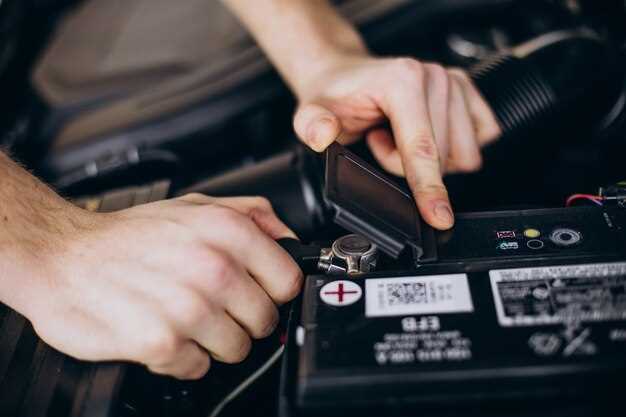How to Extend the Life of Your Hybrid Battery

Hybrid vehicles represent a harmonious blend of traditional internal combustion engines and advanced electric motors. Central to their efficiency is the hybrid battery, which powers the electric components of the system. However, like any automotive component, hybrid batteries have a finite lifespan. Understanding how to care for and maintain this critical part of your vehicle can significantly extend its longevity.
Proper management of your hybrid battery involves a combination of strategic driving habits, regular maintenance, and awareness of environmental factors. Drivers often overlook simple practices that can make a substantial difference in the overall health of their hybrid batteries. By implementing a few practical tips, you can not only enhance your vehicle’s performance but also maximize the battery’s lifespan.
This article will explore essential strategies for maintaining your hybrid battery, ranging from optimal charging practices to driving techniques that minimize stress on the battery. Whether you are a new hybrid owner or a seasoned driver, these insights will help you ensure that your hybrid vehicle remains efficient and reliable for years to come.
Choose the Right Charging Strategy for Your Driving Habits
Adopting an effective charging strategy is crucial for optimizing the lifespan of your hybrid battery. The way you charge your vehicle can significantly impact battery health, performance, and longevity. Therefore, it’s essential to align your charging practices with your daily driving patterns.
If you typically engage in short trips, consider charging your hybrid battery more frequently. This can help keep the battery at an optimal state of charge, which reduces the risk of deep discharging. Frequent charging can help maintain battery efficiency, especially if your driving often doesn’t allow the engine to recharge it adequately.
On the other hand, if your driving habits involve long commutes or extended road trips, it’s beneficial to use a strategy that accommodates longer usage periods. In this case, maximizing the hybrid system’s regenerative braking feature can help recharge the battery during drive cycles. Be sure to take advantage of this technology by anticipating stops and coasting effectively to harness energy recovery.
It’s also wise to pay attention to your battery’s charge level. Keeping the battery between 20% and 80% charge is generally recommended to enhance its lifecycle. Avoid letting the battery fully discharge or remain at 100% for extended periods. If your driving pattern allows, consider a strategy that leans towards partial charging, which helps in prolonging battery health.
Additionally, utilizing Level 2 chargers, when feasible, can provide a balanced charge at a reasonable speed without overstressing the battery. Slow charging is often gentler on the battery compared to fast charging, contributing to a longer lifespan.
By understanding your driving habits and aligning them with a suitable charging strategy, you can significantly enhance the performance and longevity of your hybrid battery, ensuring a more efficient and sustainable driving experience.
Avoid Extreme Temperature Conditions for Optimal Battery Health

The performance and longevity of hybrid batteries are significantly influenced by temperature conditions. Exposure to extreme temperatures, both hot and cold, can lead to accelerated battery degradation. For optimal battery health, it is crucial to maintain a moderate temperature range.
High temperatures can cause the electrolyte within the battery to evaporate, leading to reduced capacity and potential damage. When the temperature exceeds 95°F (35°C), the risk of overheating increases, resulting in thermal runaway, which may permanently impair battery function. To mitigate these effects, avoid parking your hybrid vehicle in direct sunlight for extended periods, especially during peak summer months. Utilize shaded areas or garages whenever possible.
Conversely, extremely cold temperatures can hinder battery performance by slowing down the chemical reactions necessary for energy production. Below 32°F (0°C), the battery’s efficiency decreases, and the vehicle may experience difficulties in starting and operation. To counteract this, consider using a battery warmer in particularly frigid climates and ensure the vehicle is stored in a heated garage during winter months.
Monitoring temperature extremes is essential. Implementing practices such as using climate control features intelligently can help maintain an optimal temperature range. Additionally, regularly servicing your hybrid vehicle ensures that the battery management system is functioning correctly, preventing potential temperature-related issues.
In summary, controlling the operating environment of your hybrid battery by avoiding extreme temperature conditions is vital for enhancing its lifespan and performance. Taking these precautions will ensure your hybrid vehicle remains efficient and reliable in varying climates.
Regular Maintenance Checks to Identify Potential Issues Early
Performing regular maintenance checks on your hybrid vehicle is crucial for the longevity of its battery system. These inspections allow you to detect any potential problems before they escalate into costly repairs or battery failure. Here are key aspects to consider during your maintenance checks:
- Battery Condition Assessment: Regularly inspect the battery for any signs of corrosion, leaks, or physical damage. Look for discoloration in battery terminals and ensure connections are secure.
- Cooling System Check: Ensure that the cooling system for the hybrid battery is functioning efficiently. Inspect coolant levels and check for any obstructions in cooling ducts that could lead to overheating.
- Electrical Connections: Examine all electrical connections related to the battery. Loose or corroded connections can hinder battery performance and efficiency.
- Software Updates: Stay informed about any firmware updates for your hybrid vehicle. Manufacturers may release updates that optimize battery management and performance.
- State of Charge Monitoring: Regularly monitor the state of charge of the battery. A consistent drop in capacity may indicate the battery’s health is degrading, warranting further inspection.
Establishing a maintenance schedule is essential. Ideally, you should conduct these checks every 5,000 to 10,000 miles or as recommended by your vehicle’s manufacturer. Keeping a record of each maintenance session can help track issues over time and facilitate better decision-making regarding repairs or replacements.
In addition to DIY checks, consider professional inspections at certified service centers to ensure thorough evaluations. Skilled technicians can use specialized tools to diagnose problems that may not be visible during regular checks.
By prioritizing regular maintenance, you can effectively minimize the risk of battery-related issues and enhance the overall lifespan of your hybrid vehicle battery.
Monitor Battery Performance with Diagnostic Tools
To ensure longevity and optimal performance of your hybrid battery, regular monitoring is essential. Using diagnostic tools not only helps in assessing the current state of the battery but also in predicting potential issues before they escalate. Here are key reasons to utilize battery diagnostic tools:
- Real-time Monitoring: Diagnostic tools provide live data on battery voltage, temperature, and charge cycles. This real-time information helps in understanding how your battery is performing under various conditions.
- Health Assessment: By evaluating key parameters, these tools can offer insights into the overall health of the battery, indicating whether it operates within optimal ranges.
- Error Detection: Many diagnostic tools can flag error codes and performance issues that may not be immediately noticeable. This allows for early intervention and maintenance.
To effectively monitor your hybrid battery, consider the following types of diagnostic tools:
- OBD-II Scanners: These devices connect to your vehicle’s onboard diagnostic system, providing detailed information about battery health and error codes.
- Battery Testers: Specialized testers can measure the charge capacity and overall condition of the hybrid battery, indicating its efficiency.
- Smartphone Apps: There are several apps available that can connect to your vehicle and provide insights regarding battery performance through your smartphone.
In addition to selecting the right tools, regular monitoring frequency is crucial:
- Perform diagnostics every 3-6 months to keep track of changes in battery condition.
- After any significant trip, especially in extreme weather conditions, it’s wise to run a diagnostic check.
Incorporating regular performance monitoring using diagnostic tools not only helps in extending the lifespan of your hybrid battery but also enhances overall vehicle efficiency.
Implement Smooth Driving Techniques to Reduce Battery Strain
Adopting smooth driving techniques is crucial for extending the lifespan of your hybrid battery. Abrupt acceleration and heavy braking can significantly increase the strain on the battery, leading to faster degradation. One effective method is to accelerate gently. Instead of pressing the gas pedal hard, gradually increase your speed to allow the electric motor to assist without overworking the battery.
Additionally, maintaining a steady speed is essential. Use cruise control on highways to avoid unnecessary fluctuations in speed, which can put extra demand on the battery. Anticipate traffic flow and slow down gradually as you approach stops. This not only conserves energy but also helps recharge the battery through regenerative braking, which captures energy typically lost during braking.
Moreover, avoid idling for extended periods. When stationary, the engine can run on gasoline instead of utilizing the hybrid battery, offering no advantage. If you expect to be stopped for more than a minute, it’s often better to turn off the engine. Lastly, minimize frequent short trips. Short journeys prevent the battery from reaching optimal temperatures and charge levels, increasing stress on it. Combining errands into one longer trip can aid in achieving better battery health.
Consider Upgrades or Replacements When Necessary
Hybrid batteries typically have a lifespan ranging between 8 to 15 years, depending on usage, maintenance, and driving conditions. However, as they age, their performance can decline, making it crucial for vehicle owners to monitor the battery’s condition closely.
One of the first signs that an upgrade or replacement may be necessary is reduced fuel efficiency. If you notice a significant drop in mileage or frequent charging of the battery, it might be time to consider your options. Furthermore, if your vehicle is experiencing diminished power during acceleration, or if the battery warning light illuminates on the dashboard, these symptoms could indicate that your hybrid battery is nearing the end of its operational life.
When contemplating upgrades or replacements, it is essential to weigh the benefits of installing a new battery versus upgrading to a more modern, advanced option. Newer models may offer enhanced energy density, greater efficiency, and improved longevity.
| Factors to Consider | Upgrade Option | Replacement Consideration |
|---|---|---|
| Age of Current Battery | Install a newer generation battery with better performance | Replace if battery is nearing or exceeds warranty period |
| Cost of Repair | Evaluate if upgrading is cost-effective compared to repair | Consider replacement if repair costs approach 50% of new battery price |
| Vehicle Usage | Upgrade for improved performance if heavy usage is expected | Replace if reliability is critical for daily commuting |
| Warranty Status | Newer models often come with enhanced warranties | Replacement units may come with limited warranties |
Ultimately, the decision to upgrade or replace your hybrid battery should be based on a careful assessment of the vehicle’s performance, financial implications, and future driving needs. Regular diagnostics and consultation with a professional mechanic can provide valuable insight into the optimal path forward for maintaining your hybrid vehicle’s efficiency.

